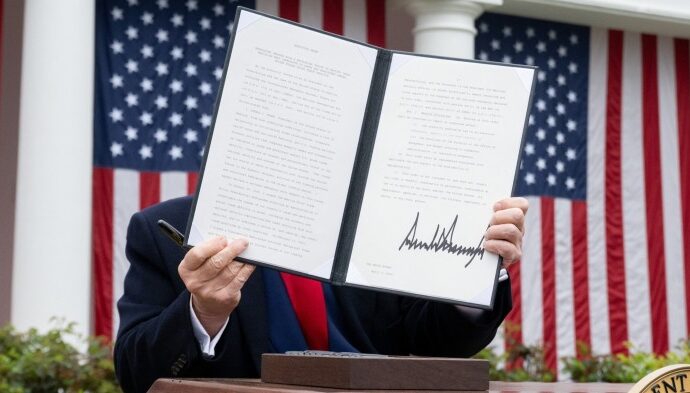Once again my invitation to the latest Conference of the Parties was lost in the mail. Probably for the best. It’s a long journey to Brazil only to discover when you arrive that everyone is on their own journey.
At least I’ve now had time to read the Action Agenda and priorities. The woke-speak is as insufferable as ever — but often amuses. Did you know that “communities in peripheries of cities” are now lumped with indigenous peoples and the poor? Those vulnerable stockbrokers of Surrey and Connecticut!
In short, COP30 wants to focus on implementation this year, rather than yet more promises. That is to be commended. The framework to mobilise the troops covers mitigation, adaptation, finance, technology and capacity building.
Again, these seem like sensible buckets to me. Not that I’ve ever seen a crazy bucket — but I’ve heard they dribble and smile a lot. Of the 30 key objectives I reckon two-thirds of them are ultimately pro-growth or positive for investors.
That is different to saying that “elevating climate action” won’t be costly or bad for taxpayers. But investment is always an expense in the short run. Meanwhile, more spending is good for stocks period — whether paid by governments or other companies.
The potential numbers in terms of climate finance are staggering in themselves. However, given that much of it is aimed at smaller, developing nations, it’s the relative size of the money I’ve been pondering of late.
Already agreed at COP29, the New Collective Quantified Goal is $300bn per annum from developed countries. There is also a scaled up $1.3tn broader commitment from “all actors”, by which they mean from the public and private sector.
A 13-figure dollar sum each year in whatever form it takes — private capital, government loans, blended finance — equals a lot of infrastructure, cleantech, adaptation and resilience programmes. Even if half the funds are reneged on. Or mysteriously vanish.
For context, using my own definition of developing countries — China no, India yes — $1.3tn is about four times the total annual capex of all 4,000 public companies (with revenues and capex over a million dollars per year) therein, according to CapitalIQ data.
Indeed, the lot of them only generate $5tn dollars in sales annually. Of course, climate financing will go to private firms as well as public ones. And a dollar spent on flood adaptation may mean a dollar not spent elsewhere.
Whatever. Developing market companies stand to gain a serious shot in the arm. I’m wondering, therefore: is COP’s pivot from talking to walking a signal for me to buy an emerging equity fund?
Regular readers may remember that I gave emerging markets two columns in a row last summer. Shares looked attractive to me for a number of reasons. I lamented, however, that they were always the next big thing, but rarely delivered.
In particular I was keen on finding an ex-China ETF, as I already had an Asian fund. I talked myself out of it in the end, though. Can’t remember why now. Probably because I’d been hurt so many times before.
At first it seemed like a good call. But since the global sell-off in April emerging market stocks have shot the roof off. Over the past 12 months I would have been better in an emerging market ex-China ETF than my beloved Japanese fund. Just, mind you.
Might the rally continue? Many bank analysts and asset managers think so. They cite a prolonged dollar down-cycle, the likelihood of further rate cuts, an end to US exceptionalism and superior growth rates underpinned by favourable demographics.
Blah, blah. Versions of the above have supported a bull case for emerging markets for as long as I can remember. But there are some new angles to the story. For example, the increased involvement of domestic investors, which may make local economies less exposed to global money flows.
The IMF also reckons structural improvements abound. In its latest world outlook report it argues that proactive inflation fighting, greater central bank independence and less currency meddling is helping with credibility overall. Fiscal splurges are less common too.
All of this should help with borrowing costs and hence the cost of capital for companies. Volatility may also moderate. You can already see this in corporate bonds, with emerging market credit being calmer than many developed markets over the past few years.
I’m pretty cool with most of these arguments, but I’m still hung up on the whole absolute versus relative thing. As I wrote last time, for example, I care not if emerging stocks are cheaper than US ones if I believe the latter are insanely expensive.
Likewise, two of the most powerful charts for me are relative. The first shows the correlation going back decades between emerging equity returns divided by global equity returns and the dollar index. It’s as tight as your uncle’s party pants.
So even if I agree that the greenback will keep falling, that only means my emerging market fund will outperform other stock markets. And if I don’t hold out much hope for the latter, this is hardly a strategy to become rich.
The other chart I often follow tracks emerging versus developed economy GDP growth rates. But again, when the former kicks ass it doesn’t always mean emerging stocks move higher. The close long-run correlation is with relative returns.
Still, if there is ever a slide in global share prices, emerging equities may be the best way to play the rebound. But let’s not pretend for a minute that if the AI bubble pops emerging stocks won’t tumble.
Perhaps less than my other funds, sure — but who wants to become poorer? I would rather wait for the green cash from COP to help me on the way back up again.
The author is a former portfolio manager. Email: stuart.kirk@ft.com; X: @stuartkirk__


